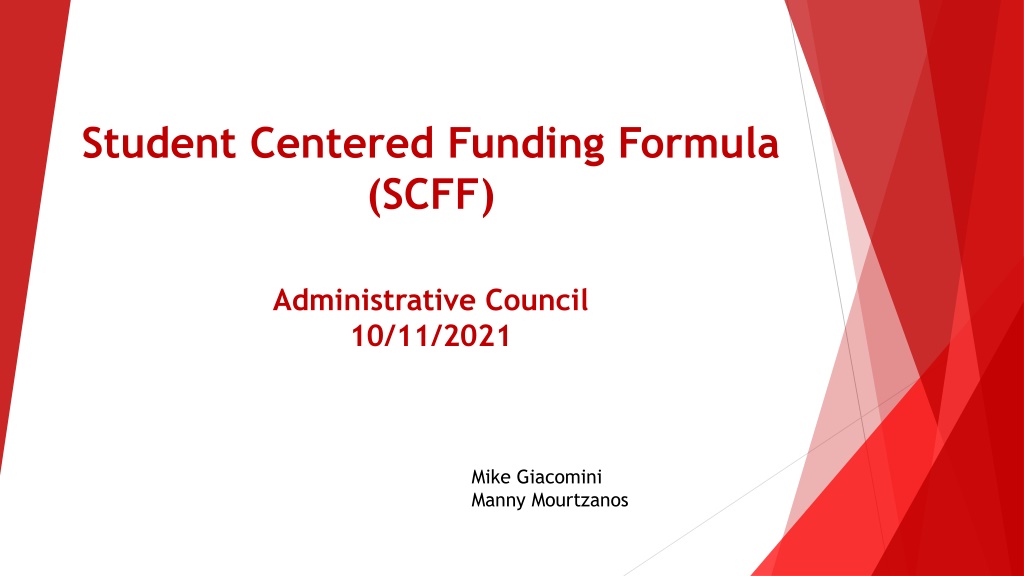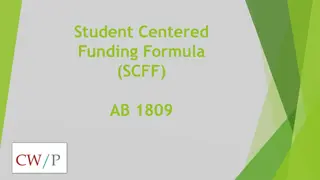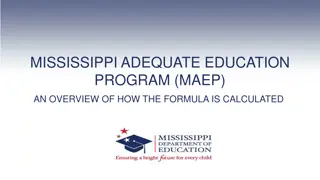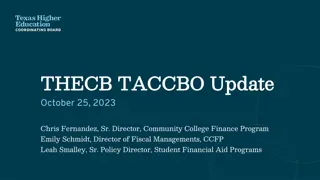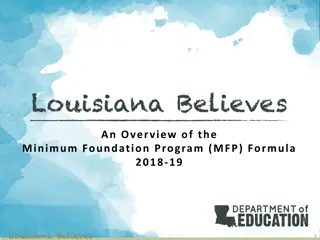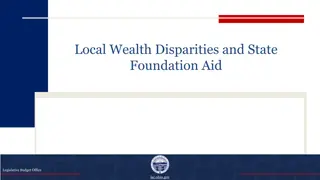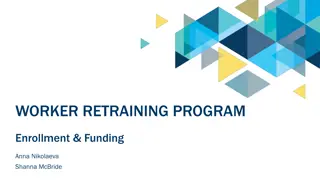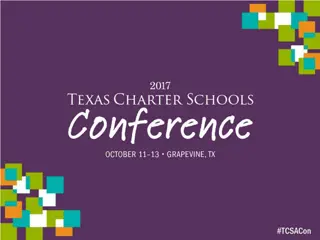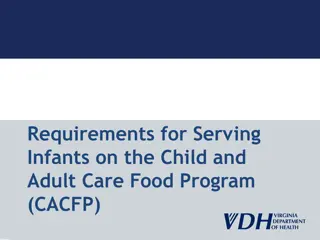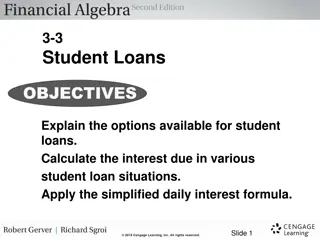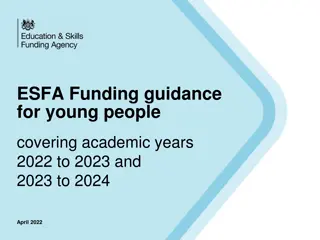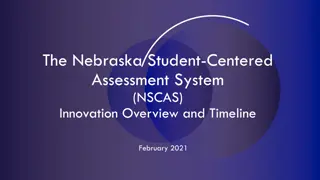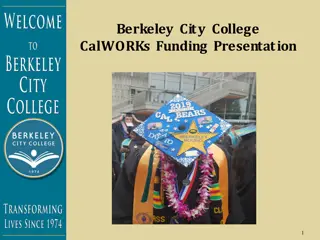Student Centered Funding Formula (SCFF) Overview
The Student Centered Funding Formula (SCFF) was implemented to enhance funding allocation in the CCC System by shifting focus from solely enrollment-based funding to include equity and student success measures. The SCFF comprises three allocations: Base Enrollments, Supplemental Counts for low-income students, and Student Success Counts. It aims to support access, equity, and student success across the system.
Download Presentation

Please find below an Image/Link to download the presentation.
The content on the website is provided AS IS for your information and personal use only. It may not be sold, licensed, or shared on other websites without obtaining consent from the author. Download presentation by click this link. If you encounter any issues during the download, it is possible that the publisher has removed the file from their server.
E N D
Presentation Transcript
Student Centered Funding Formula (SCFF) Administrative Council 10/11/2021 Mike Giacomini Manny Mourtzanos
Purpose of the Student Centered Funding Formula (SCFF) Prior to the SCFF, apportionment funding for the CCC System was based entirely on Full-Time Equivalent Student (FTES) Enrollment in each district, in addition to a Basic Allocation that considered the number of colleges and educational centers in the district. As such, district funding levels were only targeting access, without regard for measures of equity or student success. This singularly-focused, basic formula was not sufficient to guide the CCC System toward achieving its long-term goals. The new SCFF instead has a three-pronged focus, which still supports access through enrollment-based funding, but also bolsters equity and student success through allocations that target low-income students and successful student outcomes.
Student Centered Funding Formula The new formula consists of three allocations: Part 1 Base Enrollments (FTES) and Basic Allocation. 70% Systemwide Part 2 Supplemental Counts of low-income students. 20% Systemwide Part 3 Student Success Counts of success outcomes, with premiums for outcomes of low-income students. 10% Systemwide
Part 1 - Base Allocation (~70%) Basic Allocation Credit Non-Credit Career Development & College Preparation Special Admit - Credit Incarcerated - Credit Varies by College and District* + $4,009 per FTES of 3 Year Average** + $3,381 per Non-Credit FTES + $5,622 per CDCP FTES + $5,622 per Special Admit Credit FTES + $5,622 per Incarcerated Credit FTES * Basic Allocation for BC is $4.7M as a college of between 10,000 20,000 FTES in a Multi-College District, plus two (2) State Approved Centers at $1.35M each for a total of $7.42M. ** 3 Year Average is Credit FTES (less Incarcerated and Special Admit) of the current year projection + prior year actuals + prior-prior year actuals divided by 3. Source: 2020-21 Second Principal Apportionment Exhibit C
Part 2 - Supplemental Allocation (~20%) Pell Grant + $948 Promise (BOG) + $948 AB540 + $948 Funding is based on the unduplicated head counts from the prior year. Individual students may count in multiple areas.
Part 3 - Student Success Allocation (~10%) Outcome (prior year) All Students Rate $1,677 $1,677 $2,236 $1,118 $559 $839 $1,118 $559 Plus, Promise Students Rate $423 $423 $564 $282 $141 $212 $282 $141 Plus, Pell Students Rate $635 $635 $846 $423 $212 $317 $423 $212 Associates Degree Baccalaureate Degree Associates Degree for Transfer (ADT) 16 + Unit Certificate 9 Units of CTE Courses Completed Transfer to 4-Year University Completion of Transfer-Level Math & English Living Wage
The SCFF and ME All BC employees influence, and are responsible for, the College s achievement of SCFF metrics through: Access (enrollment management, outreach and retention) Financial Aid benchmarks Student success, progression and completion
The SCFF and ME Influencing Access (enrollment, outreach and retention): Ask students (classroom announcements) How many units are you enrolled in? Did you know that you might be eligible for more financial aid if you enroll for 12 or more units? Did you know that it s not too late to register for courses this semester? We have 8-week courses beginning October 18. The Student Information Desk can connect you with a Counselor or Ed Advisor to help you register.
The SCFF and ME Influencing Financial Aid benchmarks : Ask students, Have you applied for Financial Aid/FAFSA? Inform students, Ample funds are available to offset tuition, textbooks, transportation, and living expenses (rent, food, childcare, etc..) Refer struggling students to the Office of Financial Aid Dispel assumptions of disqualification
The SCFF and ME Influencing Student Success, Progression and Completion Creating a campus environment that is safe and welcoming with adequate support services Norming: 15 units a semester for timely degree completion Transferring to a 4-year institution Transfer-level math and English completion in the first year 9+ career education units
Creating a Culture of Collective Ownership Managing the Student Centered Funding Formula is everyone s responsibility Resisting the Hot Potato effect Not my circus, _________
Creating a Culture of Collective Ownership Managing the Student Centered Funding Formula is everyone s responsibility Resisting the Hot Potato effect Not my circus, or my monkeys, but I ll take care of it, anyway
Student Centered Funding Formula (SCFF) Q & A Mike Giacomini Manny Mourtzanos
